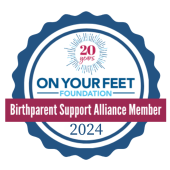What to Expect When Choosing Transracial Adoption

Understanding Transracial Adoption
Transracial adoption occurs when parents adopt a child of a different race or ethnicity. It may involve domestic or international placements, private adoptions, or foster care adoptions. Families considering this path should recognize that race plays a role in shaping identity, relationships, and social interactions.
Adoptive parents must be prepared to help their children build confidence in their racial identity while addressing challenges such as racism, bias, cultural differences, and questions about biological heritage. Raising a child in a racially aware environment requires openness, humility, and the willingness to address uncomfortable topics.
The Process of Transracial Adoption in the U.S.
1. Choose an Adoption Path
- Foster care adoption – Adopting a child from the foster system, often with little to no cost.
- Private domestic adoption – Working with an agency or attorney to adopt an infant, which can involve adoption agency fees, birth parent expenses, and legal fees.
- International adoption – Adopting a child from another country, requiring assistance of a Hague-accredited adoption agency as well as immigration hurdles.
2. Complete a Home Study
3. Undergo Pre-Adoption Training
4. Matching
5. Placement and Transition
6. Finalization
After a required post placement monitoring period (varies by state), the adoption will be legally finalized in court, making the child a permanent member of the adoptive family.
Beyond the legal process, transracial adoption means embracing a lifelong commitment to racial awareness, open conversations, and providing a diverse environment where the child feels supported and proud of their identity.
Each step ensures the child’s well-being and helps families prepare for the unique aspects of raising a child of a different race.
Building a Strong Cultural Connection
- Incorporating cultural traditions into daily life: Engaging with the child’s cultural heritage through food, music, language, and holiday celebrations helps them maintain a meaningful connection to their background. Cooking traditional meals together, playing cultural music at home, and sharing folktales from their heritage can make these traditions an organic part of everyday life.
- Surrounding the child with racial and cultural representation: Representation matters, and providing access to books, toys, television shows, and movies that reflect the child’s racial and cultural identity reinforces a positive self-image. Seeing characters and role models who look like them can affirm their sense of identity and prevent feelings of isolation.
- Building relationships with diverse communities: Actively engaging with communities that share the child’s racial or cultural background provides valuable social connections and mentorship. This could involve participating in cultural organizations, attending community events, or forming friendships with families of similar heritage. These interactions offer the child real-life examples of people who embrace and celebrate their shared identity.
- Learning about the child’s history and customs: Parents should take the time to educate themselves about their child’s cultural heritage, traditions, and historical experiences. Understanding the significance of cultural practices, learning their native language, or visiting cultural landmarks can deepen the child’s appreciation of their background and show them that their heritage is valued. Making cultural preservation a priority helps parents nurture their child’s strong and positive sense of self. Instead of feeling disconnected from their roots, children grow up with a deep appreciation for their identity, equipped with the confidence to embrace their heritage in a meaningful way.
Finding the Right Support System
- Connecting with other transracial adoptive families to exchange insights and encouragement.
- Seeking out mentors and role models who share the child’s racial or ethnic background.
- Getting involved in cultural organizations that promote racial identity and awareness.
- Joining adoption support groups for guidance and emotional support from experienced parents.
Preparing for Questions and Public Perception
- “Is that your real child?” – A firm but kind response like, “Yes, we are a family through adoption” keeps the conversation respectful without inviting further invasive questions.
- Questions about the child’s background – It’s okay to set boundaries and respond with, “That’s part of our child’s personal story, and we focus on the love we share as a family.” This reinforces that personal details are not for public discussion.
- Insensitive comments about race or adoption – Educating others when appropriate can help correct misconceptions, but parents should prioritize their child’s emotional well-being over engaging in every debate. Responding with, “Families come together in different ways, and we are proud of ours,” can be a simple way to shut down negativity.
- Curious children asking intrusive questions – Other children may ask blunt questions out of curiosity, such as, “Why don’t you look like your mom or dad?” A simple and age-appropriate response like, “Families don’t always look alike, but love makes us a family,” can help normalize adoption without oversharing.
- Well-meaning but misguided compliments – Comments like, “Your child is so lucky to have you” can unintentionally imply that adoption is a favor rather than a mutual bond. A positive way to redirect is by saying, “We are all lucky to have each other.”
- Questions about the child’s “real parents” – People often mean biological parents when asking this, but the wording can be hurtful. A calm response like, “We are our child’s real parents, and their birth parents are also an important part of their story,” acknowledges both roles without diminishing the family bond.
- Strangers commenting on physical differences – Remarks like, “She doesn’t look like you at all!” can feel intrusive. A lighthearted yet firm response such as, “That’s true! Families come in all forms” helps redirect the focus.
Find Support and Resources for Transracial Adoption
Transracial adoption comes with unique joys and challenges, but with the right approach, children can thrive in a family that honors their heritage, identity, and experiences. When adoptive parents prioritize cultural connection, education, and representation, they help their child grow into a confident, secure individual who feels fully accepted.
Choosing transracial adoption is a meaningful commitment, one that requires love, preparation, and a dedication to supporting a child’s full identity. Families considering this path can benefit from expert guidance and community support.
For those ready to learn more, Adoption Center for Family Building offers resources, support, and adoption services tailored to each family’s needs. Get personalized guidance by contacting us here.





